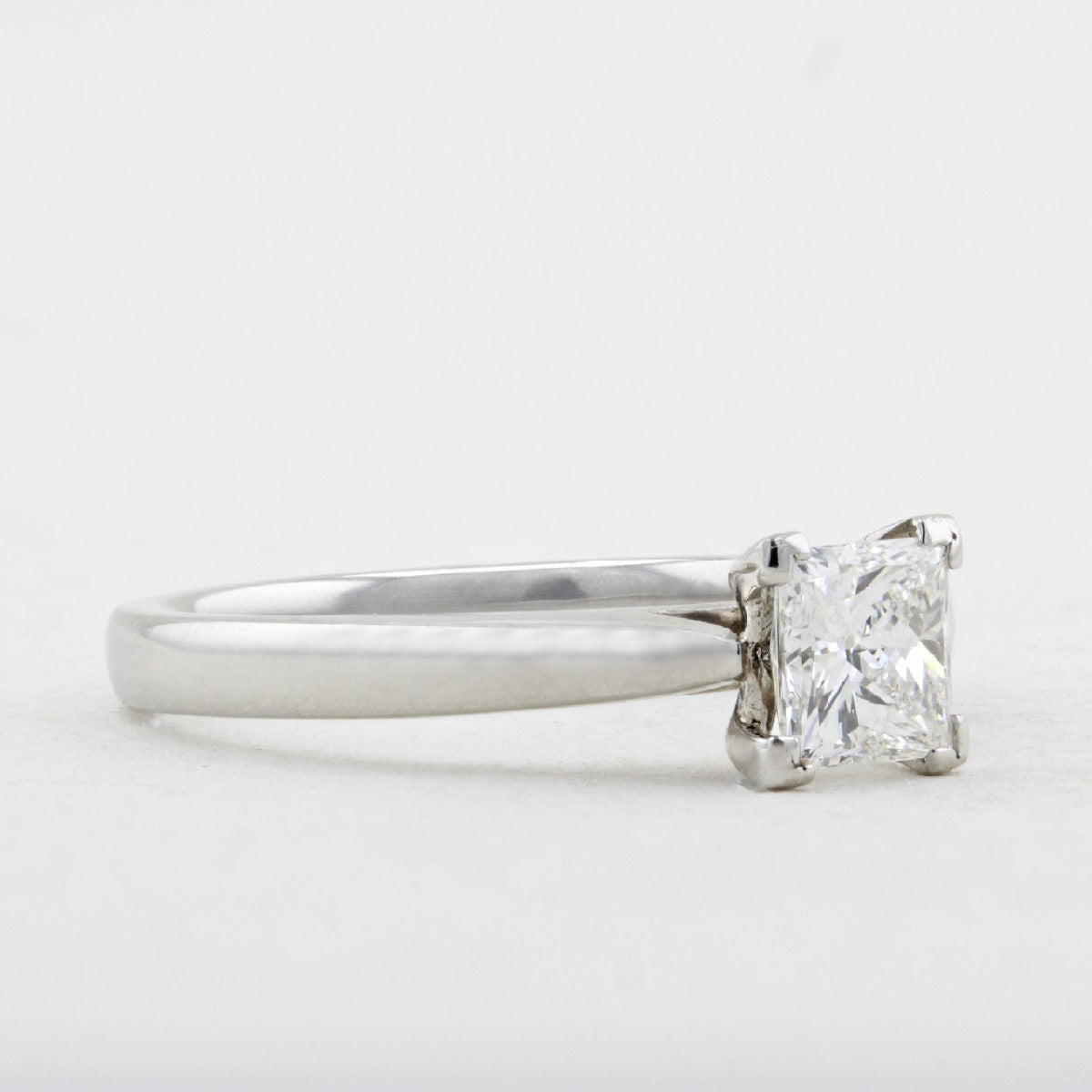Guide to Ring Metals
Choosing the right metal for your ring is just as important as selecting the stone itself. Whether you're looking for a timeless classic or something more contemporary, understanding the properties and aesthetic of each option ensures your ring not only suits your style but stands the test of time.

Why Ring Metal Matters
The metal used in a ring plays a major role in its overall look, durability, and how it wears over time. From colour and weight to strength and maintenance, each metal offers distinct advantages that make it more or less suitable depending on lifestyle and personal preference.

Platinum
Platinum has a bright white greyish colour with a naturally lustrous finish. Extremely strong and dense, highly resistant to wear
Platinum is widely regarded as the most durable and a popular choice for engagement and wedding rings. Its higher density also give it a premium feel. Over time, platinum develops a soft, satin-like patina that many find appealing, though it can be polished back to a bright finish if preferred. Platinum is a very dense material so may feel heavier than rings of the same design made in gold.

Yellow Gold
Yellow gold is warm, with a rich golden hue, softer than platinum, but still durable with care. It requires occasional polishing to maintain it's shine.
Its rich tone complements diamonds and coloured gemstones alike, particularly warmer stones like rubies or yellow sapphires. With a higher gold content (75%), 18ct gold has a softer feel than platinum and may show signs of wear over time, but these can be easily managed with routine maintenance.

White Gold
White gold is bright white, similar to platinum when freshly rhodium-plated It is strong and suitable for everyday wear
White gold is created by alloying yellow gold with white metals such as palladium and then finishing it with a rhodium plating for a bright, silvery-white look. While it offers a similar aesthetic to platinum, it’s lighter and often chosen for setting white stones such as Diamonds to enhance their natural high white colour. The rhodium coating can wear away with time, revealing a slightly warmer hue beneath, so periodic replating may be needed.

Rose Gold
Rose Gold has a soft pink hue with a romantic, vintage charm. It's strong due to its copper alloy content.
Rose gold has seen a resurgence in popularity thanks to its distinctive blush tone and versatility. Created by adding copper to gold, it offers a warmer, more vintage-inspired feel. Its strength makes it a practical option, though the colour may not suit all gemstones equally—often pairing best with white diamonds, pink Sapphires, and warm-toned stones. Due to different alloy mix proportions, the richness of rose gold colour can vary.

Mixed Metals
Many rings are created with a combination of metals, this can often be a yellow gold band with white gold setting for the Diamond, to ensure the Diamonds colour is shown to its greatest potential or a platinum band with yellow gold setting for an Emerald, to emphasise the warm tones within the stone.
These techniques have been used in jewellery designs, not only to create matching tones but also to provide contrast for different parts of the ring; separating the settings to draw focus and aesthetic appeal.

Alternative Metals
There are a few alternative metals that have come to the market, such as Titanium, Cobalt, and Tungsten with claims of extreme hardness and low cost, in comparison to precious metals like gold and platinum.
These metals are less commonly available in jewellers due to the lack of workable material in them, they are not able to be resized, repaired or re-polished. As our hands change over time and the rings get scratched, scuffed or broken it means they are unable to be altered or restored and have no material value for resale to a jewellers.
Considerations When Choosing Your Metal
-
Skin Tone
Warmer skin tones tend to suit yellow and rose gold, while cooler tones often pair beautifully with white metals.
-
Lifestyle
If you work with your hands or wear your ring daily, harder-wearing metals like platinum may be preferable but should still be removed to avoid excessive wear or damage.
-
Aesthetic
Classic, modern, vintage, or bold—your choice of metal will influence the ring’s overall visual impact.
-
Maintenance
Consider how often you're willing to clean or rhodium re-plate your ring when choosing between finishes, as additional costs will be involved for regular maintenance.
Your choice of ring metal should reflect both your lifestyle and your personal taste. Whether you lean toward the timeless appeal of yellow gold or the enduring strength of platinum, each metal brings its own beauty and significance. Understanding the qualities of each helps ensure that your ring not only looks exquisite but also lasts for generations.

